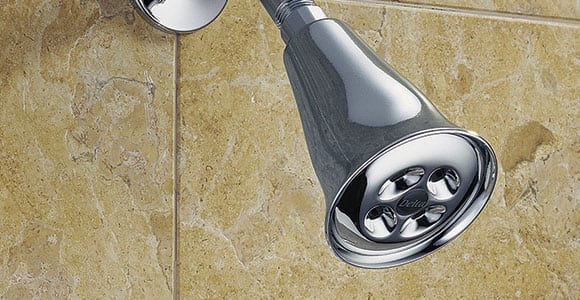Dear Jim: Both my energy and water bills are increasing, so I plan to install low-flow showerheads. I tried them before, but my family didn’t like them. Are they any better now, and how do I pick a good one? — Pat V.
Dear Pat: Bathing uses a lot of water a month for most families, and hot water drives costs up. Low-flow showerheads can help cut down on both.
For many years now, all showerheads sold in the U.S. have been limited to a maximum water flow rate of 2.5 gallons per minute (gpm) at a water pressure of 80 pounds per square inch (psi), as mandated by federal energy-efficiency standards. Some older showerheads may use as much as 5 gpm without even providing an adequate, forceful water flow.
Many of the new low-flow showerheads provide good water flow using even less than 2.5 gpm. I must have tested more than a dozen low-flow showerheads this year alone, and I found that there are significant differences in showerhead sprays among those with identical flow rates. The most efficient ones are as low as 1.5 gpm, and the savings in water and energy use can pay back their cost in just a few months.
There are a number of factors that determine how much water and energy will be saved. Water savings is affected directly by the gpm rating for the showerhead, while energy savings is determined by both the gpm rating and how much hot water has to be mixed with cold water for a comfortable shower.
The type of spray pattern has an effect on how warm the water feels on your skin. Showerheads that create larger water droplets feel warmer because large droplets have a lower percentage of surface area, so they cool down less before they reach your body.
Some needle-type, low-flow showerheads create tiny water droplets. These might lose more heat as they move through the air. If this happens, people tend to set the faucet handle to a greater percentage of hot water and may actually end up using more hot water — and more electricity — than before. Some showerheads also add air to the spray for more force, but this might also cool the water.
It’s easy to distinguish narrow needle-spray designs because they are usually small. For a fuller spray, look for ones with many holes across a larger face. Some might appear to have a large face with many spray holes. If they have adjustable patterns, not all the holes are used simultaneously, so they may actually create a needle spray if you desire that at times.
There are two inexpensive add-on devices that can help reduce water use on any showerhead. One is a tiny push/pull trickle valve (also called a lathering valve) that’s mounted between the shower arm and the showerhead. When you don’t need water, push the button to slow the water to a trickle without having to readjust the temperature at the faucet each time.
Another water-saver is a Lady Bug valve by ShowerStart (also known as Evolve Showerheads). People often turn on the hot water and walk away, waiting for the hot water to reach the shower. Gallons of hot water may be wasted down the drain until you actually get into the shower.
With the Lady Bug, when the water temperature at the showerhead reaches 95 degrees, the flow is automatically slowed to a trickle so very little hot water goes down the drain. When you’re ready to get into the shower, pull the string on the handle, and the warm shower starts flowing at full force.
These companies offer showerheads and systems: Delta, 800-345-3358, www.deltafaucet.com; Moen, 800-289-6636, www.moen.com; Price Pfister, 800-732-8238, www.pricepfister.com; ShowerStart, 480-496-2294, www.evolveshowerheads.com; and Speakman, 800-537-2107, www.speakmancompany.com.



